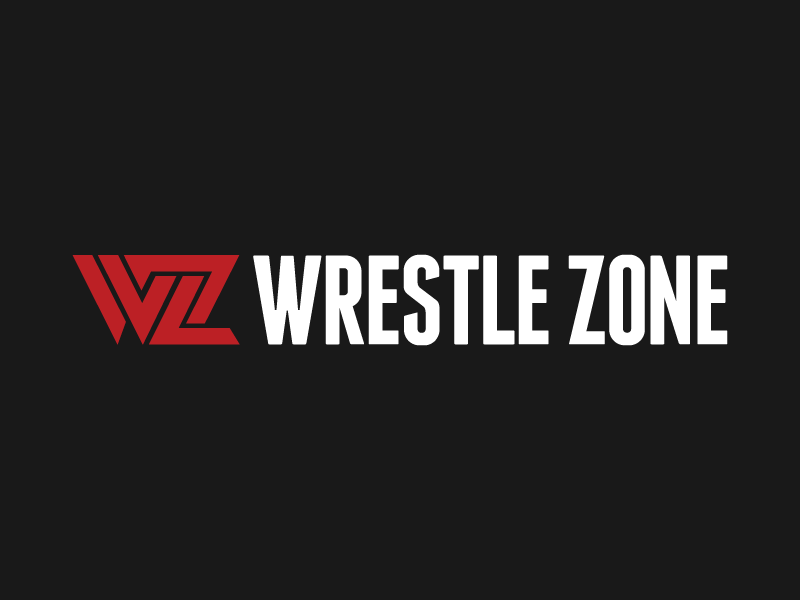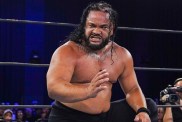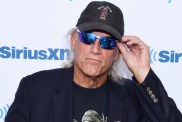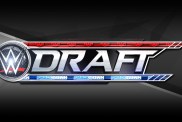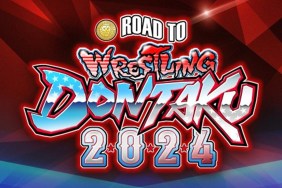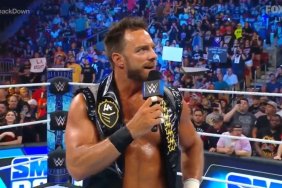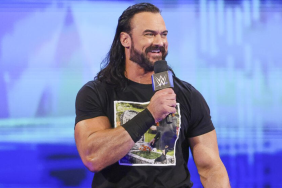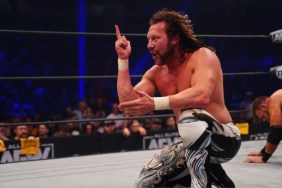It’s been said that thanks to the Interstate Highway System, it is now possible to travel from coast to coast without seeing anything. Anyone who has ever had the pleasure to sit catatonic gazing out the window watching the same trees, the same road signs, and the same landscape roll past wearily, would agree with this statement. For every few steps industry takes towards technical efficiency and convenience, it takes a step back in common sense. Highways for all their convenience and timesaving are little more than bleak outdoor tunnels of repetition, and merely traveling once along one can permanently turn a driver into an airplane enthusiast. Yet there are groups of people who spend more time in their car on said highways than in their own home. Such constant excessive travel in such a sterile environment can trigger bizarre temptations and cravings for ‘escapes’ from the monotony. Pro wrestlers are one of the many victims of the road.
The stars of the WWE live out of a suitcase. Endless jet setting across state lines and countries just to get to the next show. More often than not they have to make their own way to the next venues in a small window of time. An endless maze of asphalt and the same scenery is the overlooked backstage disadvantage of being in the WWE spotlight. Some wrestlers pass the tedium with camcorder home videos, some pass it with landmark stop-offs, some pass it by sleeping with other stars, but a lot of stars pass the time satisfying a newfound temptation.
Seeing vintage stars back in the ring not only dispels some childish illusions in the fact that legends do age, but more over, that they don’t age particularly gracefully. Jake The Snake, Ultimate Warrior, and The Outsiders, at one time or another were toned, tanned and tanked, but as they persist to revisit the ring for their ongoing homecomings, the fans realize that they’re now post middle-aged and show the remnants of a life lived in excess. Excess found while on the road.
In Beyond the Mat, Jake the Snake describes his own experience while in mid transit between events. An endless supply of prostitutes, cocaine, and alcoholism. As he recounts the stories, the intense shame is evident on his face; it would fairly safe to assume that he wasn’t in a healthy state of mind during the time. A trance prompted by the road. The loneliness and the hopelessness of traveling with the illusion of direction. The road isn’t the sole excuse for all the mistakes he made, the same mistakes are made by people off the road, but nevertheless, the road has played a major role in the downward spiral of many superstars.
Self-destruction has become accepted as a backstage aspect of pro wrestling, something that can’t be changed. The death rate of wrestlers is 400% higher than average, and the pitfalls of travel are to blame. In an interview Roddy Piper himself began by saying, “I’m not going to make it to 65. Let’s just face facts guys.” The statement strikes a chord in every fan that remembers Piper as the exuberant and childishly good-humored Scotsman of their childhood. Roddy says that he got caught in a whirlwind of prescription pills, alcohol and cocaine for over 20 years. Also present at the interview was the man responsible for bringing the Patriot to life, who said that at one stage he took 100 pain pills each day, going on to confirm that “seven to eight in every ten” superstars are engaging in drugs on a regular. The figures suggest this problem is bigger than it seems, and yet it continues to be overlooked.
The problem is tremendous but who is to blame for the shroud surrounding it. Some experts suggest Vince McMahon himself created a “wild west” in the 80s where wrestlers were released like mavericks onto the world, fending for themselves. Like any group of testosterone filled men away from their family and homes for extended periods time, they took advantage of the freedom, almost immediately resulting in drastic outcomes. Does the promoter have divine responsibility to oversee his staff, and make sure that even when they aren’t on the job, they’re still in control? Not legally he does, but morality would suggest that running a global company such as the WWE isn’t a nine-to-five job. An onus of staff maintenance has to be accepted by the ‘father’ of the ‘family’.
Others would say that these athletes are grown men and they have the gift of self-control, no one coerces them to get tangled in a web of drugs. This is true, when traveling they are still on business, and being celebrities to a degree, they are expected to uphold a façade of professionalism both on the outside and on the interior. The conundrum being that if a wrestler works six days a week and most of his or her ‘off time’ is in a vehicle to the next arena in another state, there’s no break, no recreation time, and so leisure time merges into career time. After all, statistics show that ten percent of the population use drugs regularly, however, the approximate ratio of the WWE is/was eighty percent. That extra seventy percent is a byproduct of the endless stream of asphalt between shows.
The road seems like a logical factor to lay blame on because even the wrestlers themselves have confirmed that it’s the temptations of travel that cause this widespread and inevitably short-lived addiction. For the WWE to exist in the manifestation that it does today excess travel requirements are mandatory, which make solutions difficult. It may not have a visible consequence on the ringskills and show quality in the short run, but steps have to be taken behind the scenes to guarantee the longevity of starpower and the good name of wrestlers nationwide.
The WWE have taken steps in the past to redress the festering wound. Between 1992 and 1996 McMahon began a obligatory drug testing program for all stars working in the company at the time, it was incredibly effective, several stars were booked into compulsory rehabilitation or in serious cases, termination. Yet Vince himself said that as effective as it was, it was cost prohibitive, and he sees no problem at the moment. And that’s what it boils down to, as long as the stars are still performing at the highest level possible and maintaining their buyrates, then the problem doesn’t exist.
Offered resolutions to the inherent wrestling drug culture are supervision, team transport, and shorter working weeks. For one, if wrestlers were to be monitored for drug activity on a regular basis, as they were in the mid 90s, it would assure that the stars could perform well past their prime. To an onlooker it seems nonsensical to not organise a bus or fleet of minibuses to transport the workers as a team to venues, not only would it ease the boredom and thus cut down on the extra curricular activities, but the group would begin to bond and support each other. If they remain in a group, then someone could be employed to ensure that pockets of individuals stay on the straight and narrow. The much maligned brand extension was an effort to minimize hours stars had to work each week, but it still seems there is too much being demanded of them. Profits in the WWE no longer have to be struggled for, they come in without a great deal of effort, so why not give stars a week or two off every now an then?
There are pros and cons to every job, but prowrestling seems to have its fair share of pitfalls. The monotony of the road is an unexposed ugly side of the business, and has been the root of many personal battles, none more famous than Eddie Guerrero’s, and deaths such as Curt Hennig’s. Wrestlers are people too, and as courageous as the character they play on screen may be, it doesn’t reflect the mortal man behind the scenes. To generations of kids they are heroes, but sometimes heroes need heroes of their own to protect them from the demons of the road.
If you’d like to send feedback, criticism or question, drop me an email at TheButchershopColumn@hotmail.com.
Over and Out
The Butcher
